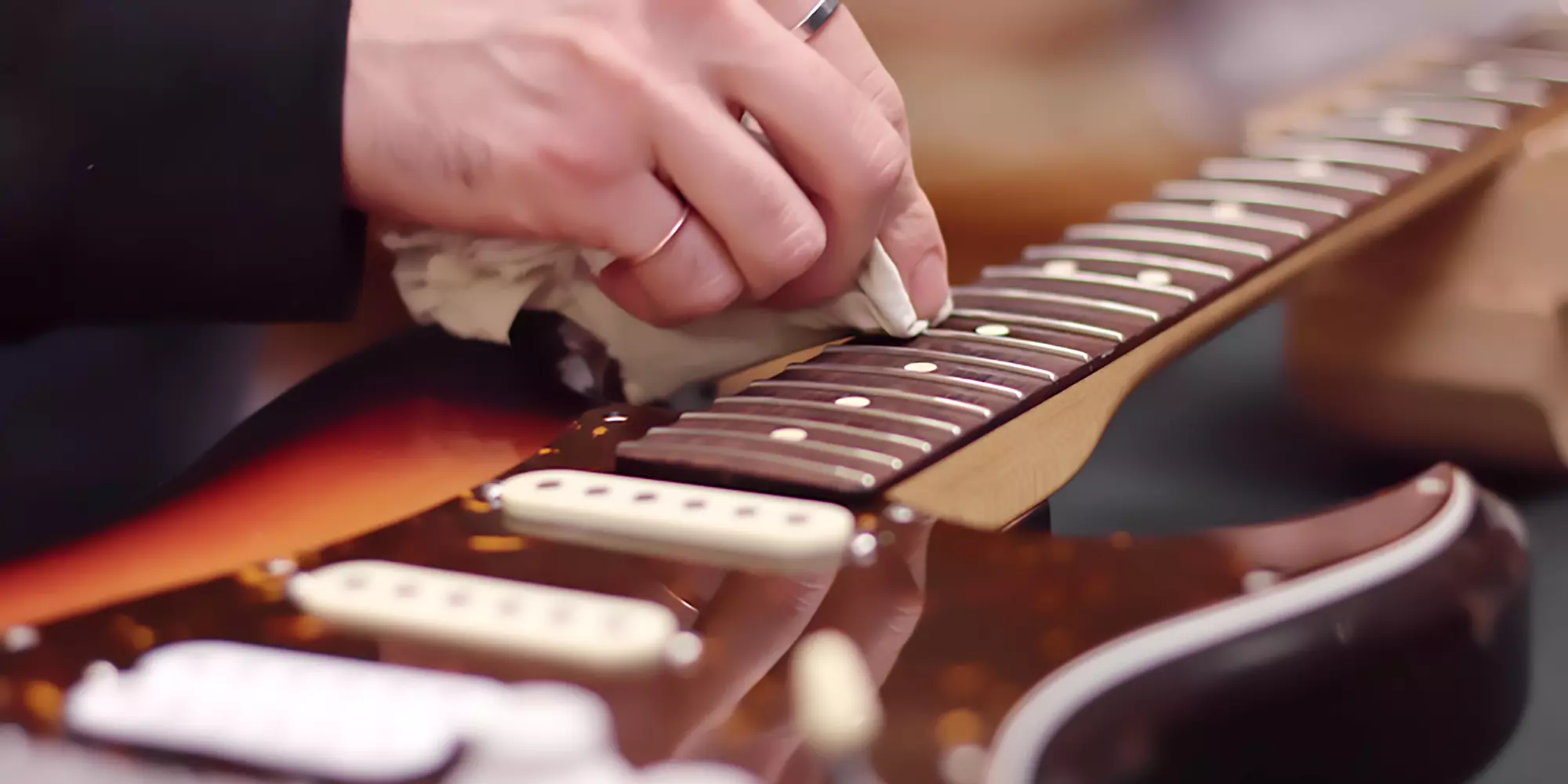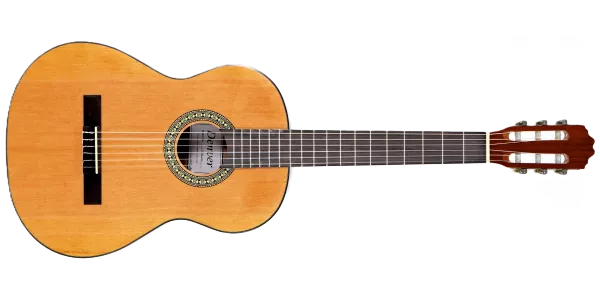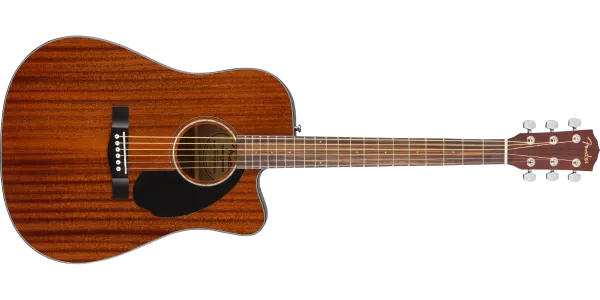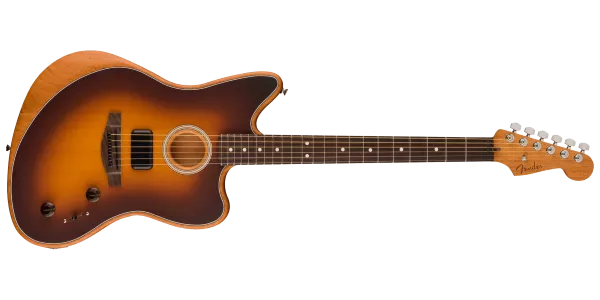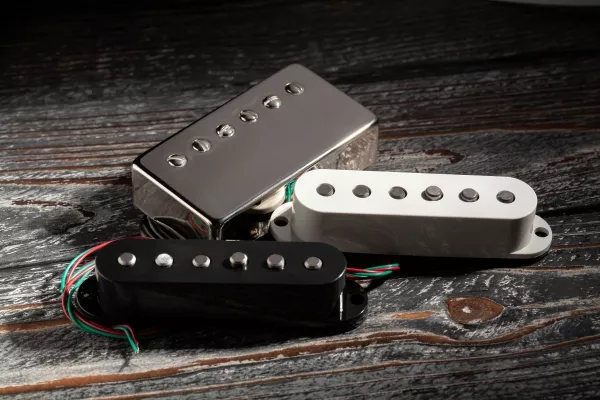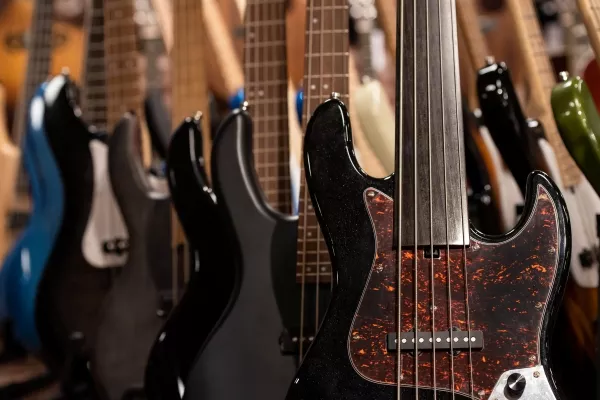Explaining The Main Types of Guitars
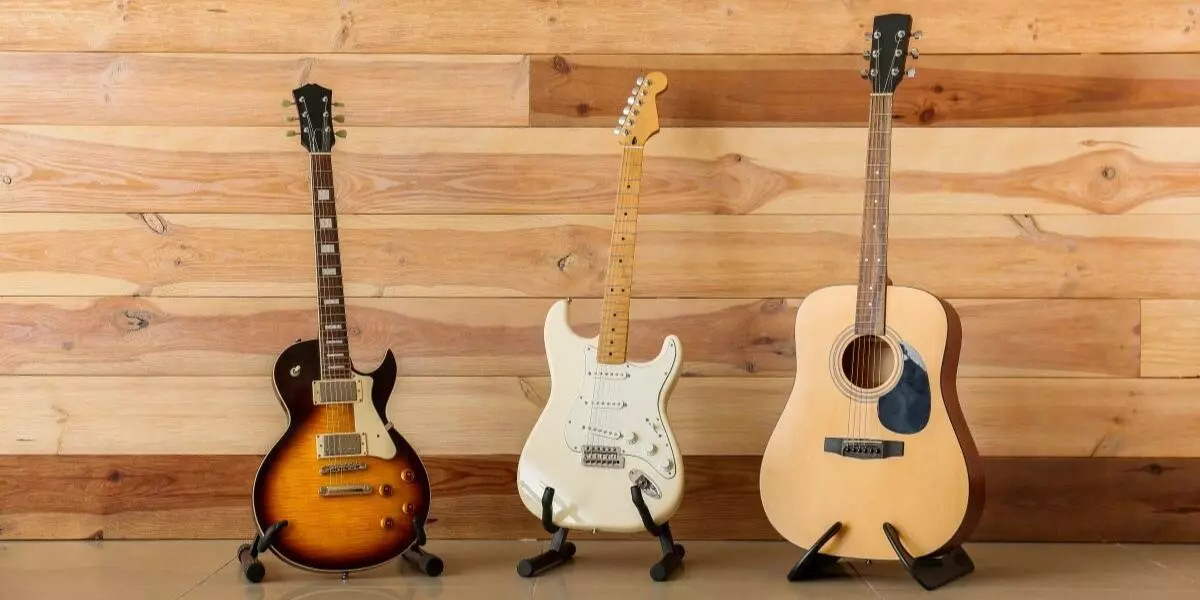
Oh, the guitar. What a wonderful, versatile instrument. There may be an innumerable number of players worldwide with equally numerous reasons for playing. What was yours?
Maybe it was a street performer, playing in the summer heat just outside the grocery store, with your mother pulling you inside while being mesmerized by their voice?
Or, could it have been a recording of a lead guitarist shredding the most harsh, ear-piercing—yet epic— rock solo you’ve ever heard playing through the radio of your father’s truck while driving down the highway at just slightly concerning speeds?
Usually, that first experience would prompt some further action. To go beyond listening, again and again, to that melody, that song, that made this impression in their mind. They might get the itch. The urge. That hidden curiosity just waiting to be plucked out. Eventually, it strikes:
Maybe I should learn the guitar!
So, you might wander down, or run down, even, to your local Long and McQuade with stars in your eyes. It might be with your family. It might be with friends, or even on your own.
One thing is clear: this is the day! Today, you’re leaving this store with a guitar! Your first guitar!
But Which Guitar Should You Choose?
But, wait a minute. The first guitar you buy has to be perfect, right? Well, now that becomes another question entirely. The reality might hit a bit hard, for a moment. How would you go about it? What should you even choose? Questions start pouring into your mind. Some are curious. Some are panicked.
Confusion is common in situations like these. Quite common, actually. Did your questions sound something like this, maybe?
- Does the brand matter?
- Those two look the same. What’s the difference?
- That one over there looks really cool. Should I get it?
Well, that’s why this guide is here! Today, we'll go over the guitar together, examining its three primary forms and seeing what makes each one special. This blog will explain the different types of guitars and consider key factors when making that special choice that begins your musical journey.
Acoustic Guitar
Famously, acoustic guitars are made of wood. Many, many types of wood. They’re light to handle due to their hollow bodies, and come with many stylish natural finishes.
You’ll often find that acoustics use woods of differing qualities from one body part to another. The neck may be crafted from mahogany or rosewood for its resonance, while the body might utilize okume or spruce for its durability.
The front of the body, where your hands rest, is often referred to as the top and may be especially crafted for wear and tear over time, often coming laminated for this reason. This is all for the purpose of crafting a sound that’s unique from model to model, while ensuring the guitar can withstand everyday use in varying weather conditions.
Acoustics can further be separated into different types based on the shape of the body. These shapes are the classic, dreadnought, & hybrid.
Dreadnought
Dreadnought bodies specialize in volume! Their bloated lower body provides much more room for sound to bounce around in, allowing them to carry their sound much farther. Because they’re larger than usual, they aren’t usually recommended for younger players, as they may struggle to get a proper hold.
Additionally, specific models of acoustic guitars can be available in smaller sizes for beginner learners or those seeking a travel-sized instrument. These sizes can be labelled as 3/4 (good for ages 6 - 9 ) or 1/2. (good for ages five and under), or simply just “mini”. The bodies and necks of these models are scaled down, so there’s no loss in sound quality.
Beginner-friendly brands include: Yamaha, Denver & Epiphone.
Electric Guitar
Electric guitars hold the classic rockstar image in the minds of many! It’s really no surprise they’re often the most popular type to go with; dozens of body types, brands, and customizable options—all due to their incredibly wide reach over the decades—is sure to make one’s head spin.
The weight and feel of the guitar will differ from one model to another, so it’s crucial to spend some quality time with a given guitar, carefully evaluating its playability.
How light is a Fender compared to a Gibson? Would a rounded Les Paul body feel better than a more oval Stratocaster body? There’s really no wrong answer, so take note of as many of these details as you can and decide accordingly.
Often with electrics, players are encouraged to develop good fingering technique and become familiar with chords over time.
Due to their electronic components, they’re often heavier than acoustic instruments and require an amplifier unit to be heard correctly.
They also include several knobs to adjust various attributes of the electronics in the guitar; typically, there’s one for volume and another for tone, which adjusts the overall brightness—or darkness—of the sound.
Higher-end guitars may have more knobs, depending on their level of sound customization, which controls everything from master volume to pickups, further broadening playing styles. But wait, what are those?
Pickups
Pickups are magnetized coils which “pick up” the electric signals and vibrations made by the strings. The signal is then filtered through the pickups to the amplifier, which brings the music we hear. They may come either in singles, pairs, trios, or even more on higher-end guitars. The type of pickup on a guitar will affect how this signal is processed and polished. Let’s take a look below:
Single coil
Single-coil pickups consist of a single coil of wire, typically copper, wrapped around a set of cylindrical magnets. They tend to carry a bright, crisp sound with them, perfect for players who enjoy a piercing, strong sound and like to make a statement. However, they’re pretty prone to feedback and hum, which isn’t very nice on the ears over time, and might make one very acquainted with their neighbours all of a sudden.
Humbucker
Humbucker pickups are made from two coils positioned in reverse polarity, giving them a distinctive brick-like appearance and a thicker sound than single coils.
This design makes the electronic signal more balanced and reduces, or “bucks”, the hum from single coils. This creates a warm, thick tone, while also highlighting mid-range frequencies when played. This is perfect for players who prefer a more gentle approach to their play.
A drawback, however, is that humbuckers lose the pronounced sound that single coils favour due to this mid-range balancing.
Additionally, pickups can be either active or passive. To keep things simple, active pickups can compress your sound into something more consistent and stable, while passive pickups will make your sound more dynamic overall.
Additionally, it is worth noting that active pickups require an external battery to function. This is usually a regular 9-volt battery, and can be found under a panel on the back of the guitar.
Electric and bass guitars will have a switch that can toggle the pickup's property. This can change whether it’s on or off, the strength of its output, or even which pickup is active at a given time, if they come in multiples. Pairing this with a preferred amp can help create a truly unique sound!
Beginner-friendly brands include: Kramer, Squier, and Jackson.
Bass Guitar
At first glance, basses may appear to be simply larger electric guitars. While they may share many qualities with electric guitars, there are just as many differences if you look a bit closer.
Bass guitars are the longest of the three, with a neck length of 34 inches on average. This extra length accommodates the longer bass strings, allowing bass frequencies to resonate more easily.
The build quality and wood types also tend to highlight this, often featuring materials like rosewood or Indian laurel in the fingerboard, and a body typically made of mahogany, basswood, or alder.
Now, if the neck length proves to be an uncomfortable stretch—and for those on the shorter side, like me, it just might—shorter basses are available, measuring up to 30 inches, known as short-scale basses. Don’t worry, no sound quality is lost if one chooses these smaller basses; just like acoustic partial sizes, these basses are scaled-down versions of larger models.
In addition, beginner basses often have four strings instead of the traditional six found on electric and acoustic. They’re also much thicker. For some, this might make a bass guitar easier to manage, as the thickened strings may feel easier to press down, and there is a bit less to work with.
This doesn’t mean playing bass is a walk in the park, however, as players are often encouraged to develop smooth fingering and an ear for rhythm, as learning to improvise rhythms usually comes soon after!
Just like electrics, the bass will require an amp unit to be properly heard. In fact, bass amps are larger than electric amps for this reason, as bass sounds require larger hardware to resonate properly.
Beginner-friendly brands include: Sterling by Music Man, Squier, and Gretsch.
What About Guitar Strings?
Guitar players tend to be spoiled for choice when it comes to their strings. There are numerous varieties and brands available for an extensive range of prices—let’s examine them below.
Nylon vs Steel Strings
The main types of materials strings are made from are either nylon or steel. Each can provide a slight tonal difference, making them suitable for different playing styles and situations.
Nylon Strings
Nylon strings are often found only on acoustic guitars and are softer to the touch than steel strings. They also tend to be more flexible and responsive, since they hold less tension than their steel counterparts, and can therefore stretch farther without compromising quality. Tonally, they possess a warm, mellow sound characteristic of classical or Latin music styles.
Steel Strings
Steel Strings, on the other hand, require a harder grip compared to nylon, but produce a stronger, brighter sound characteristic of harder genres of music, such as rock or metal.
This is due, in part, to their increased durability, which allows them to be treated more aggressively. Steel strings are also pick-friendly, as they can withstand repeated use over time, unlike nylon strings. They can be made from numerous kinds of metals, including bronze, nickel, or even silver.
String Gauges
Additionally, all guitar strings come in gauges, which measure the thickness of a string down to 1/1000 of an inch. They’re often listed as a series of numbers, ordered from thinnest to thickest, with the smallest number serving as the package’s identifier. For example, a 10-gauge string set will have the smallest string measuring at 0.010 inches. Typically, strings tend to be sorted into different gauge types.
Light
Light-gauge strings are quite thin and produce a brighter, twangy sound. Because they’re so thin, players find them easier to press down and handle. However, they’re more susceptible to breakage than other gauges.
Medium
Medium strings are just that—middle of the pack, with a typically warm sound. They’re the perfect median between durability and sound quality, and are a good choice if uncertainty strikes you.
Heavy
Heavy strings are quite thick and require more pressure than usual to play. They are, however, very durable and provide a rich, bass quality to your sound.
Popular string brands include D’Addario and Ernie Ball.
Try Different Guitars!
To conclude, the guitar is a highly versatile instrument with numerous customization options. As touched on earlier, it’s very important to keep options open and experiment with playing many types of guitars before making your decision.
What you originally imagined yourself playing might not feel as good in person. On the other hand, a guitar you never would have considered might feel like pure bliss when strumming.
If indecision strikes you, I’d recommend keeping these questions in mind to help make your choice:
- How heavy does the guitar feel? Will it be manageable for long practices?
- How does the neck feel in your hands? Is it smooth? Rough?
- Place your hands near the bottom of the neck, close to the body of the guitar. How far do your fingers need to stretch to reach this area? Is it comfortable?
- Does the guitar fit your personal style?
Of course, if the sheer excitement of trying your future guitar distracts you from this, ask!
There’s no such thing as a silly question or concern. After all, this guitar will be played by you, and none other than you! It’s with this choice, and our help, that you’ll begin your musical journey.
And, as the saying goes, the greatest of journeys begin with a single step. Let us be that step to help propel you into the wonderful world of guitar playing!

